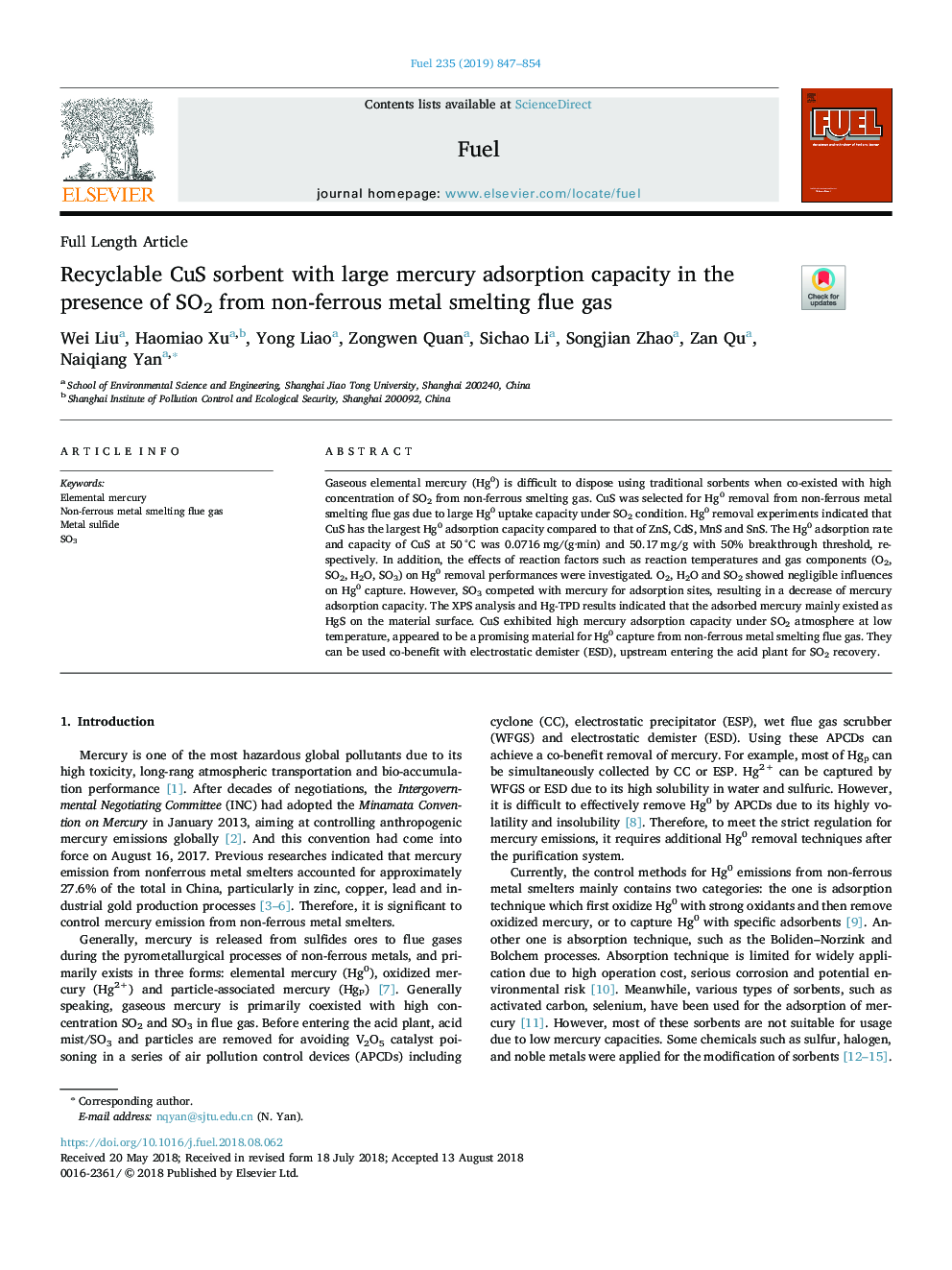| Article ID | Journal | Published Year | Pages | File Type |
|---|---|---|---|---|
| 11000551 | Fuel | 2019 | 8 Pages |
Abstract
Gaseous elemental mercury (Hg0) is difficult to dispose using traditional sorbents when co-existed with high concentration of SO2 from non-ferrous smelting gas. CuS was selected for Hg0 removal from non-ferrous metal smelting flue gas due to large Hg0 uptake capacity under SO2 condition. Hg0 removal experiments indicated that CuS has the largest Hg0 adsorption capacity compared to that of ZnS, CdS, MnS and SnS. The Hg0 adsorption rate and capacity of CuS at 50â¯Â°C was 0.0716â¯mg/(g·min) and 50.17â¯mg/g with 50% breakthrough threshold, respectively. In addition, the effects of reaction factors such as reaction temperatures and gas components (O2, SO2, H2O, SO3) on Hg0 removal performances were investigated. O2, H2O and SO2 showed negligible influences on Hg0 capture. However, SO3 competed with mercury for adsorption sites, resulting in a decrease of mercury adsorption capacity. The XPS analysis and Hg-TPD results indicated that the adsorbed mercury mainly existed as HgS on the material surface. CuS exhibited high mercury adsorption capacity under SO2 atmosphere at low temperature, appeared to be a promising material for Hg0 capture from non-ferrous metal smelting flue gas. They can be used co-benefit with electrostatic demister (ESD), upstream entering the acid plant for SO2 recovery.
Keywords
Related Topics
Physical Sciences and Engineering
Chemical Engineering
Chemical Engineering (General)
Authors
Wei Liu, Haomiao Xu, Yong Liao, Zongwen Quan, Sichao Li, Songjian Zhao, Zan Qu, Naiqiang Yan,
